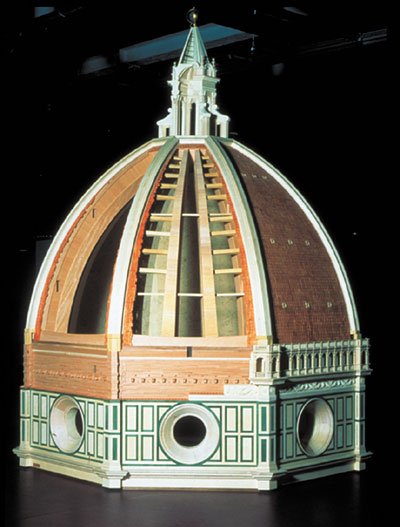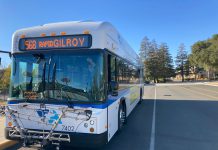With a harmonious blend of art and science, the genius of
Leonardo da Vinci bursts on the Bay Area in the form of a
one-of-a-kind exhibition at The Tech Museum of Innovation in San
Jose.
With a harmonious blend of art and science, the genius of Leonardo da Vinci bursts on the Bay Area in the form of a one-of-a-kind exhibition at The Tech Museum of Innovation in San Jose.
“Leonardo: 500 Years Into the Future” is on display through Jan. 4 at the Parkside Hall venue at the museum in the only U.S. showing of the exhibition. The exhibit combines nearly 200 artifacts, including life-size working models, hands-on interactive machines and displays, multimedia presentations and works of art based on da Vinci’s engineering, scientific and art principles. The majority of the pieces in the collection have never been exhibited before.
“As the global capital of innovation, San Jose is the ideal city for a significant exhibit like this,” said Chuck Reed, San Jose mayor. “Congratulations to The Tech and the Redevelopment Agency for working together to bring such unique educational and cultural attractions to San Jose. The Redevelopment Agency’s investment in this exhibit will benefit downtown restaurants, hotels and other San Jose businesses.”
The exhibition is the result of a collaboration between the Opera Laboratory and the Institute and Museum of the History of Science in Florence, Italy. The curator is the museum’s director, Paolo Galluzi, a da Vinci expert and professor of the history of science at the University of Florence. The Santa Clara County Sister County Commissions helped to bring the exhibit, which Galluzi said is the culmination of more than 30 years of work, to San Jose.
“‘Leonardo’ is a masterpiece of artwork, history and creativity that captures our mission to inspire the innovator in everyone,” said Peter Friess, president of The Tech. He has been at the helm for such major exhibits as “Body Worlds 2” and other interactive displays and programs.
“Scientists, engineers, designers, educators, students and the general public all will find ‘Leonardo’ fascinating,” he added. “It was certainly worth waiting five centuries for.”
Some of the items in the exhibit will be familiar, as pictures of them can be found in textbooks and other books. Featured are more than 100 life-size and scale working models based on conceptual drawings and designs by da Vinci and his contemporaries. The recreated models were assembled using tools and materials common to artisans in da Vinci’s era.
Two of the most well known, the Sforza horse and the Flying machine, are on display in larger-than-life form. The machine, which has been referred to as a Renaissance hang glider, was designed to be operated using a combination of pedals, pulleys and a hand crank. It has a wing span of nearly 40 feet and weighs 1,320 pounds.
The Sforza horse statue, one of Leonardo’s most famous works never to be completed, was designed as a gift for Ludovico il Moro, the duke of Milan, to be a monument to Francesco Sforza, Ludovico’s predecessor. It would have been his only major sculpture had the project not been abandoned. The 70 tons of bronze set aside for the sculpture were later melted down to make cannons used to defend Milan from invasion by Charles VIII.
The replica on display at the museum is made of steel and fiberglass. It is 24 feet tall and weighs 20 tons. It required two ocean containers to ship it from Florence and was reassembled locally by Italian artisans.
The entire collection traveled to San Francisco in 17 freight containers and was assembled at the museum by Italian artisans who traveled with it.
The Tech is located in downtown San Jose at 201 South Market Street at the corner of Park Avenue and South Market Street. Tickets for the museum and the special exhibition are $25 for adults, $15 for children ages 3-17 and $20 for college students with ID and seniors ages 62+.
The exhibition can be viewed 9 a.m. to 8 p.m. Thursday through Sunday and 9 a.m. to 5 p.m. Monday through Wednesday. The tickets are timed, offered at 15-minute intervals between 9 a.m. and 30 minutes before closing each day. The museum will be closed Christmas Day.














